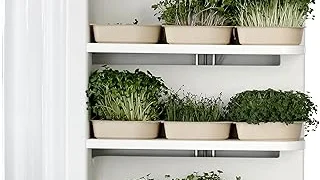If you’re a rose enthusiast, you likely appreciate the beauty and fragrance they bring to your garden. However, as roses grow and their roots spread out, you might wonder whether they could cause damage to your home’s water pipes. While rose roots are generally not as aggressive as tree roots, they can still infiltrate and potentially cause damage to underground pipes, especially if there are existing cracks or weaknesses. In this article, we’ll explore how rose roots interact with water pipes, potential risks, and how to prevent these issues in your garden. With the right precautions, you can continue enjoying your roses without worrying about plumbing problems.
Root Growth and Water Seeking
Like other plants, rose roots grow in search of water and nutrients. They naturally spread out in the soil, seeking moisture. Rose roots can extend horizontally in drier conditions, reaching for any available water, including water pipes. These roots are typically not as large or aggressive as tree roots. Still, their natural tendency to seek out water can cause problems if they grow too close to plumbing systems.
While roses generally have shallow root systems, they can still be destructive under certain conditions, especially when planted near water pipes or sewer lines. Understanding how these roots behave can help prevent potential plumbing issues.
Potential Damage to Water Pipes
Rose roots can cause damage to water pipes if certain conditions are met. While less aggressive than tree roots, they can still infiltrate plumbing systems under the right circumstances.
Leakage and Root Penetration:
If a water pipe leaks or has a weak point, rose roots may infiltrate and cause further damage. These roots are naturally drawn to moisture, so if there’s any escaping water, even from a small crack, they may start growing toward it. Over time, the roots can expand inside the pipes, leading to blockages, leaks, or even bursts. This could result in costly repairs and water damage.
Blockages and Clogs:
Rose roots can cause leaks, blockages, or clogs in pipes. When roots infiltrate, they can form a mass that restricts water flow. This can cause slow drainage or even complete blockages, which could disrupt water flow in your home or garden.
While less likely than tree roots, rose roots can potentially damage water pipes, especially if there are leaks or defects in the pipes, as they may infiltrate and cause issues. The roots, searching for water, can enter through small cracks or weak spots in the plumbing, potentially leading to blockages, leaks, or damage over time. While rose roots are smaller, it’s important to consider their placement near water pipes to avoid these potential problems.
For more tips on preventing damage in your garden, read How to Prevent Mulch from Washing Away.
Less Common than Tree Roots, But Still a Concern
Rose roots are generally less likely to cause major damage to pipes than trees’ larger, more aggressive root systems. Tree roots are notorious for infiltrating water pipes, causing significant damage, and even breaking through the plumbing. However, rose roots can still pose a threat if planted too close to your plumbing system, especially if the pipes are old or already have small cracks.
While rose roots are typically smaller and less invasive than tree roots, they can still penetrate water pipes if the conditions are favorable. Therefore, it is important to maintain proper planting distance from your water pipes to avoid potential issues.
For more information on plant root systems, visit What Are Fine Fescues?
Prevention: How to Minimize the Risk of Root Damage to Water Pipes
The best way to prevent damage from rose roots is by planning your garden and taking steps to keep your roses at a safe distance from your plumbing. Here are some effective strategies:
1. Plant Roses Away from Sewer Lines and Utility Pipes:
To minimize the risk of root damage, it’s important to plant roses away from sewer lines and other underground pipes. Ideally, roses should be planted at least 3 to 5 feet away from plumbing systems. This ensures that the roots won’t interfere with pipes and reduces the risk of root penetration.
2. Use Root Barriers:
Root barriers are physical barriers that prevent roots from growing in a particular direction. They are typically made from plastic, metal, or fabric and are installed vertically around the plant’s root zone. This can effectively prevent roots from reaching water pipes. If you’re planting roses in an area with a high risk of root damage, using root barriers is a proactive solution.
For more on protecting your garden from unwanted growth, see How to Use Seashells in Your Garden.
3. Choose Smaller Rose Varieties:
Some rose varieties have more aggressive root systems than others. For example, climbing or large shrub roses tend to have bigger root systems that spread out more. If you’re planting roses near plumbing, opt for smaller or dwarf varieties, which are less likely to cause problems due to their more compact root systems.
Inspection and Maintenance: Keeping Your Pipes Safe from Rose Roots
Even with the best prevention strategies, regular inspection and maintenance of your plumbing system are crucial for detecting and addressing potential issues before they become major problems.
1. Regularly Check for Leaks:
Make it a habit to inspect your water pipes regularly, especially if your roses are planted nearby. Small leaks can go unnoticed and, over time, may attract roots. Catching these issues early can save you from costly repairs.
2. Monitor for Wet Spots in the Yard:
If you notice any wet spots or puddles in your yard that appear without any clear cause, it could indicate a leak in your plumbing system. Excess moisture from a leaking pipe can attract plant roots, so address these issues immediately. is important.
For more tips on plumbing maintenance, explore our article on How to Clean a Garden Sprayer.
Other Considerations for Healthy Roses and Safe Plumbing
Maintaining healthy watering practices and soil conditions is important to prevent overwatering, which could attract root growth toward plumbing.
1. Proper Watering Practices:
Overwatering roses can cause root rot, which harms the plant and increases root aggression in search of water. Water your roses deeply but infrequently to encourage deeper root growth. This also helps prevent the roots from growing horizontally toward water pipes.
For more on properly watering your plants, read How Long to Water Zoysia Grass.
2. Soil Drainage:
Ensure that the soil around your roses drains well. Poor drainage can lead to shallow root growth, increasing the chances of the roots growing toward water pipes. Proper soil drainage encourages healthy root systems and reduces the likelihood of root damage to plumbing.
FAQs:
1. Can rose roots damage PVC pipes?
Yes, rose roots can damage PVC pipes, especially if the pipes have existing cracks or weak points. While PVC is more resistant to root penetration than older materials like clay or cast iron, roots can still infiltrate if the system leaks or cracks.
2. How deep do rose roots grow?
Rose roots typically grow 1 to 3 feet deep. However, they can extend horizontally in search of water, especially if they detect a leak in an underground pipe.
3. Can I plant roses near water pipes if they’re well-maintained?
It’s not advisable to plant roses too close to water pipes, even if they are well-maintained. Over time, root systems may still cause issues, particularly if the pipes develop cracks or leaks.
4. How often should I inspect my plumbing for root damage?
Inspect your plumbing at least once a year, especially if you have plants near water pipes. Early detection can help prevent costly repairs.
5. Are any rose varieties less likely to cause plumbing damage?
Yes, smaller rose varieties or those with more compact root systems are less likely to cause damage to plumbing. Consider using shrub or ground-cover roses, which tend to have less invasive root growth.
Conclusion: Protecting Your Water Pipes and Enjoying Healthy Roses
Roses are a beautiful addition to any garden. Still, it’s important to understand the potential risks their roots pose to water pipes. You can enjoy beautiful roses without worrying about costly plumbing repairs by planting roses at the proper distance from plumbing, using root barriers, and maintaining a regular inspection and maintenance routine for your pipes.
Call to Action:
Take the time to evaluate your garden layout and ensure your roses are planted far enough from water pipes. Use the preventative measures outlined in this article to safeguard your plumbing system and enjoy a beautiful, worry-free garden. If you need professional advice or assistance with plumbing maintenance, don’t hesitate to contact an expert. Happy gardening!





